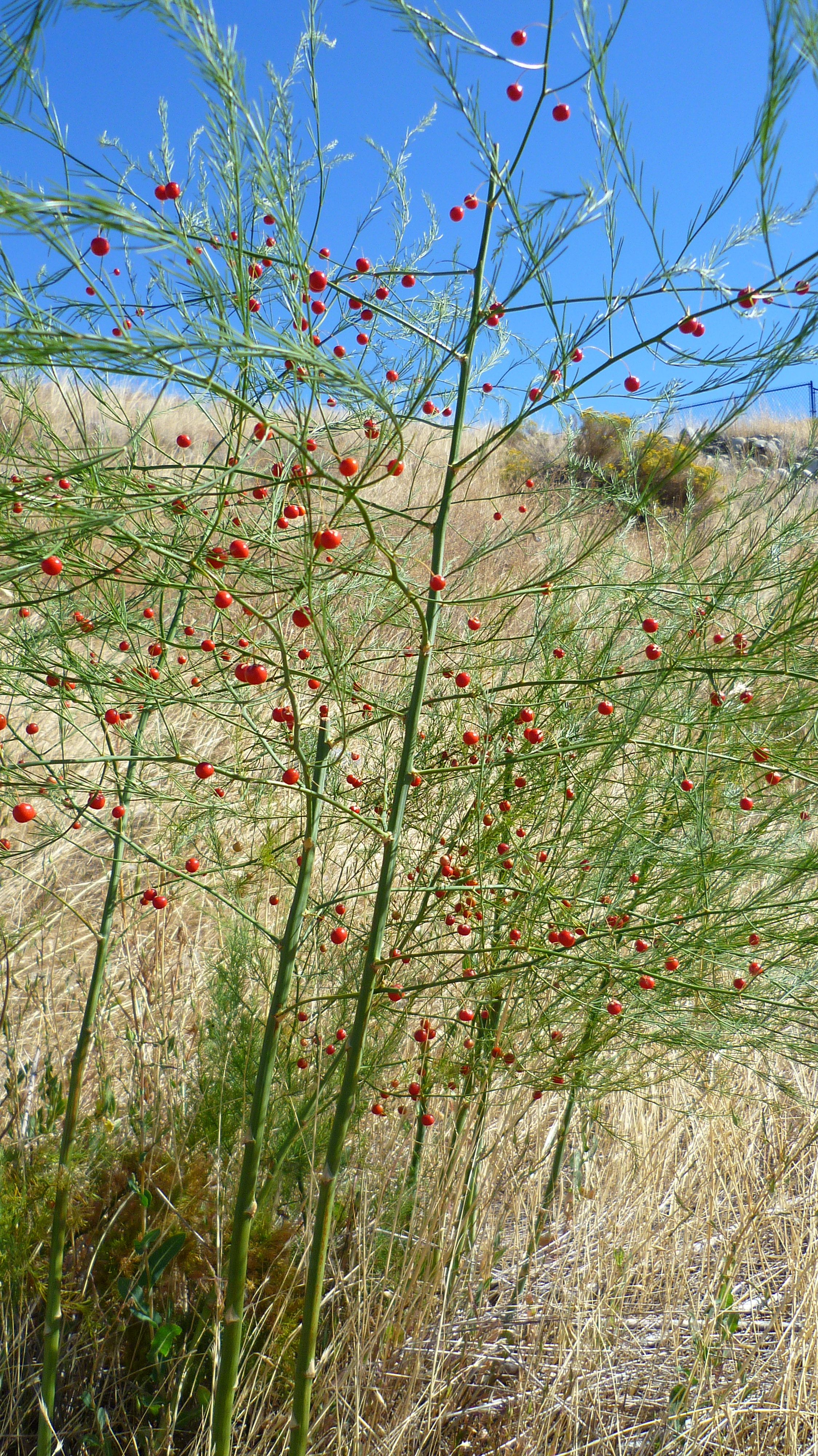|
Diplochory
Diplochory, also known as “secondary dispersal”, “indirect dispersal” or "two-phase dispersal", is a seed dispersal mechanism in which a plant's seed is moved sequentially by more than one dispersal mechanism or vector. The significance of the multiple dispersal steps on the plant fitness and population dynamics depends on the type of dispersers involved. In many cases, secondary seed dispersal by (typically granivorous) invertebrates or rodents moves seeds over a relatively short distance and a large proportion of the seeds may be lost to seed predation within this step. Longer dispersal distances and potentially larger ecological consequences follow from sequential endochory by two different animals, i.e. diploendozoochory: a primary disperser that initially consumes the seed, and a secondary, carnivorous animal that kills and eats the primary consumer along with the seeds in the prey's digestive tract, and then transports the seed further in its own digestive tract. Mo ... [...More Info...] [...Related Items...] OR: [Wikipedia] [Google] [Baidu] |
Seed Dispersal
In spermatophyte plants, seed dispersal is the movement, spread or transport of seeds away from the parent plant. Plants have limited mobility and rely upon a variety of dispersal vectors to transport their seeds, including both abiotic vectors, such as the wind, and living (Biotic component, biotic) vectors such as birds. Seeds can be dispersed away from the parent plant individually or collectively, as well as dispersed in both space and time. The patterns of seed dispersal are determined in large part by the dispersal mechanism and this has important implications for the demographic and genetic structure of plant populations, as well as wikt:migration, migration patterns and species interactions. There are five main modes of seed dispersal: Gravitation, gravity, wind, ballistic, water, and by animals. Some plants are serotinous and only disperse their seeds in response to an environmental stimulus. These modes are typically inferred based on adaptations, such as wings or fle ... [...More Info...] [...Related Items...] OR: [Wikipedia] [Google] [Baidu] |
Myrmechory
Myrmecochory ( (sometimes myrmechory); from ("ant") and ''khoreíā'' ("circular dance") is seed dispersal by ants, an ecologically significant ant–plant interaction with worldwide distribution. Most myrmecochorous plants produce seeds with elaiosomes, a term encompassing various external appendages or "food bodies" rich in lipids, amino acids, or other nutrients that are attractive to ants. The seed with its attached elaiosome is collectively known as a diaspore. Seed dispersal by ants is typically accomplished when foraging workers carry diaspores back to the ant colony, after which the elaiosome is removed or fed directly to ant larvae. Once the elaiosome is consumed, the seed is usually discarded in an underground midden or ejected from the nest. Although diaspores are seldom distributed far from the parent plant, myrmecochores also benefit from this predominantly mutualistic interaction through dispersal to favourable locations for germination, as well as escape fr ... [...More Info...] [...Related Items...] OR: [Wikipedia] [Google] [Baidu] |
Rubia
''Rubia'' is the type genus of the Rubiaceae family of flowering plants, which also contains ''Coffea'' (coffee). It contains around 80 species of perennial scrambling or climbing herbs and subshrubs native to the Old World. The genus and its best-known species are commonly known as madder, e.g. ''Rubia tinctorum'' (common madder), '' Rubia peregrina'' (wild madder), and '' Rubia cordifolia'' (Indian madder). Uses ''Rubia'' was an economically important source of a red pigment in many regions of Asia, Europe and Africa. The genus name ''Rubia'' derives from the Latin ' meaning "red". The plant's roots contain an anthracene compound called alizarin that gives its red colour to a textile dye known as Rose madder. It was also used as a colourant, especially for paint, that is referred to as Madder lake. The synthesis of alizarin greatly reduced demand for the natural compound. In Georgia and Armenia, Rubia is used for dying Easter eggs red. History Several species, such a ... [...More Info...] [...Related Items...] OR: [Wikipedia] [Google] [Baidu] |
Plocama
''Plocama'' is a genus of flowering plants in the family Rubiaceae. It was described by William Aiton in 1789. It is distributed from the Canary Islands to northwestern India. The genus was expanded in 2007 when several other Rubiaceae genera were merged into it. There are now about 34 species.Backlund, M., Bremer, B., & Thulin, M. (2007)Paraphyly of Paederieae, recognition of Putorieae and expansion of ''Plocama'' (Rubiaceae-Rubioideae).''Taxon'', 56(2), 315-328. Plants of this genus are herbs or shrubs. They generally have an offensive scent when crushed. The leaves are oppositely arranged. The corolla is funnel shaped with a short to long tubular base. The fruit is either a drupe or a body that splits into two parts when ripe. Species ''Plants of the World Online'' includes: # ''Plocama afghanica'' (Friedrich Ehrendorfer, Ehrend.) Maria Backlund, M.Backlund & Mats Thulin, Thulin # ''Plocama asperuliformis'' (Lincz.) M.Backlund & Thulin # ''Plocama aucheri'' (Jean Baptiste An ... [...More Info...] [...Related Items...] OR: [Wikipedia] [Google] [Baidu] |
Asparagus
Asparagus (''Asparagus officinalis'') is a perennial flowering plant species in the genus ''Asparagus (genus), Asparagus'' native to Eurasia. Widely cultivated as a vegetable crop, its young shoots are used as a spring vegetable. Description Asparagus is an herbaceous, perennial plant growing typically to tall, with stout stems with much-branched, feathery foliage. It has been known to grow as long as . The 'leaves' are needle-like cladodes (Aerial stem modification, modified stems) in the Leaf#Morphology, axils of scale leaves; they are long and broad, and clustered in fours, up to 15, together, in a rose-like shape. The root system, often referred to as a 'crown', is adventitious; the root type is Fascicle (botany), fasciculated. The flowers are bell-shaped, greenish-white to yellowish, long, with six tepals partially fused together at the base; they are produced singly or in clusters of two or three in the junctions of the branchlets. It is usually dioecious, with male ... [...More Info...] [...Related Items...] OR: [Wikipedia] [Google] [Baidu] |
Cougars
The cougar (''Puma concolor'') (, '' KOO-gər''), also called puma, mountain lion, catamount and panther is a large small cat native to the Americas. It inhabits North, Central and South America, making it the most widely distributed wild, terrestrial mammal in the Western Hemisphere, and one of the most widespread in the world. Its range spans the Yukon, British Columbia and Alberta provinces of Canada, the Rocky Mountains and areas in the western United States. Further south, its range extends through Mexico to the Amazon Rainforest and the southern Andes Mountains in Patagonia. It is an adaptable generalist species, occurring in most American habitat types. It prefers habitats with dense underbrush and rocky areas for stalking but also lives in open areas. The cougar is largely solitary. Its activity pattern varies from diurnality and cathemerality to crepuscularity and nocturnality between protected and non-protected areas, and is apparently correlated with the prese ... [...More Info...] [...Related Items...] OR: [Wikipedia] [Google] [Baidu] |
Common Kestrel
The common kestrel (''Falco tinnunculus''), also known as the European kestrel, Eurasian kestrel or Old World kestrel, is a species of bird of prey, predatory bird belonging to the kestrel group of the falcon family (biology), family Falconidae. In the United Kingdom, where no other kestrel species commonly occurs, it is generally just called the "kestrel". This species occurs over a large native range. It is widespread in Europe, Asia and Africa, as well as occasionally reaching the east coast of North America. It has colonized a few oceanic islands, but vagrant individuals are generally rare; in the whole of Micronesia for example, the species was only recorded twice each on Guam and Saipan in the Marianas. Taxonomy The common kestrel was Species description, formally described in 1758 by the Swedish naturalist Carl Linnaeus in the 10th edition of Systema Naturae, tenth edition of his ''Systema Naturae'' under the current binomial nomenclature, binomial name ''Falco tinnunculu ... [...More Info...] [...Related Items...] OR: [Wikipedia] [Google] [Baidu] |
Lamb's-quarters
Lamb's quarter, lambsquarters, and similar terms refer to any of various edible species of herbaceous plants otherwise known by the common names goosefoot or pigweed. There are numerous variations, with or without hyphens and apostrophes, using one word or two, and singular or plural. As a rule, the British English spelling uses two terms with or without hyphen though usually with an apostrophe, while the American English spelling uses one word. * In Europe, the term usually refers to ''Chenopodium album'' (white goosefoot). * In North America, the term usually refers to ''Chenopodium berlandieri ''Chenopodium berlandieri'', also known by the common names pitseed goosefoot, lamb's quarters (or lambsquarters), and ''huauzontle'' (Nahuatl) is an annual plant, annual herbaceous plant in the family Amaranthaceae. The species is widespread i ...'' (pitseed goosefoot). The name "lambsquarters" is thought to derive from the name of the English harvest festival Lammas quarter. This f ... [...More Info...] [...Related Items...] OR: [Wikipedia] [Google] [Baidu] |





